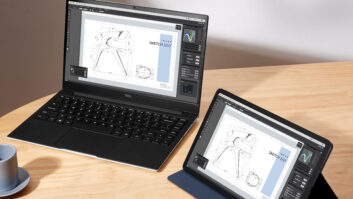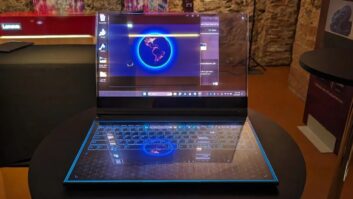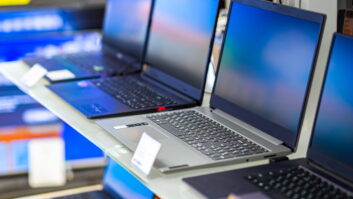Singapore – Fusion
Garage, which pulled its
from the market last year, has launched a successor tablet and its
first smartphone.
Both are based on a
proprietary Grid OS that uses the Android OS kernel but is designed to
differentiate itself from what the company called the “sameness” of Android
tablets and phones.
The tablet and
phone feature a user interface completely different from their Android
counterparts. The OS organizes apps and content on an “endless grid,” is free
of hard buttons, and uses swipes and a virtual scroll wheel to navigate through
functions. Both models will download standard Android apps from Amazon’s app
store and, from Fusion Garage’s web store, apps written with Fusion Garage’s
application programming interface (API).
The Grid-10
10.1-inch tablet is available for preordering at Amazon.com and
and will be
available for shipping Sept. 15 in Wi-Fi and Wi-Fi/3G versions at $499 and
$599, respectively, said CEO Chandra Rathakrishnan during a webcast. The tablet
incorporates quadband GSM/HSPA 3G technology and Wi-Fi 802.11b/g/n, according
to Amazon’s website. The Grid-4 smartphone, which features a 4-inch touchscreen,
will be available sometime in the fourth quarter as an unlocked phone,
presumably also featuring quadband GSM/HSPA technology.
The unlocked price
for the 16GB model will be $399, compared with other unlocked smartphones sold
at $499 and up, Rathakrishnan said.
The OS is not a
“re-skin” of the standard Android OS but was built on top of Android in much
the same way that Apple built Mac from Unix, the CEO said. Users unlock the
device by signing their name on the touchscreen, which then presents an
“endless grid” of application icons arranged in clusters.
The company said users
move the grid of icons up and down and left and right by touching a finger to
the screen and moving the finger. Users don’t scroll through pages of apps, as
is the case with Android and the iPad, he said. An app can be moved from
cluster to cluster, and when two apps are clustered, a screen automatically appears
to prompt users to name the cluster. Each cluster can be expanded to clearly
show all of the apps within, or the home screen can be collapsed to see all
clusters at once.
With wheel-based application
interaction, users tap a finger to bring up a wheel whose spokes offer
different functions. Users slide a finger around the wheel to choose a function,
the company said.
Content such as
music and movies is also organized in grids.
The user interface
delivers motion-picture-quality animation, the CEO also claimed.
“Every function has been rethought and
redesigned,” Rathakrishnan said during the webcast of the music, movie, photo
and productivity apps included with the tablet and phone. A user who stops
watching a movie on the tablet before it ends, for example, will be able to
resume watching on the phone where he left off.
Both devices
incorporate Bing-based web search.
Though many
details weren’t provided, what is known is that the tablet features a 1,366- by
768-pixel 16:9 screen offering what the CEO called the highest resolution of
any tablet. The tablet also features Nvidia Tegra 2 1.2GHz dual-core processor,
MicroSD card slot, HDMI output and 16GB of embedded memory, Amazon shows.
The phone features
a 4-inch 800 by 480 LED-backlit touchscreen, a squared-off shape with no curved
surfaces and a dual-core Qualcomm Snapdragon processor.
The company’s
first tablet, the Wi-Fi-only Joojoo, used a proprietary Linux-based OS that
relied on Internet connections to access cloud-based apps and services via
on-screen icons. It did not store apps locally. Its cloud-based apps and
services included Pandora, Google Documents, Hulu, YouTube, Twitter, Picasa,
Flickr, AOL Music, Last.fm, the IMBD database, Gmail, Hotmail, LinkedIn and web
portals with Adobe Flash support.
The company called
the launch of Joojoo “premature” because the company’s Linux-based OS
proved to be unstable, although a software update later became available. To
make up for the first tablet’s uneven performance, the company promised a free
Grid tablet to all JooJoo owners.













